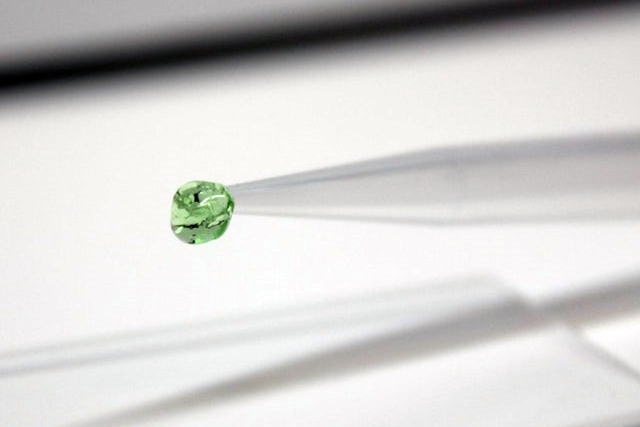
Hydrogel infused with Crispr-edited DNA, programmed to release therapeutic cargoes (Wyss Institute, Harvard University)
23 Aug. 2019. Bio-engineers developed a process using the gene editing technique Crispr to design gel materials with properties added for drug delivery, diagnostics, and electronic circuits. A team from Harvard University and Massachusetts Institute of Technology describe the process in today’s issue of the journal Science (paid subscription required).
Researchers led by biomedical engineering professor James Collins from Harvard’s Wyss Institute for Biologically Inspired Engineering and MIT’s Engineered Gene Networks Lab aim to take greater advantage of gene editing to create new materials with specific characteristics to carry out specific functions. Crispr, short for clustered, regularly interspaced short palindromic repeats, makes it possible to edit genomes of organisms harnessing bacterial defense mechanisms that use RNA to identify and monitor precise locations in DNA.
For this task, Collins — on the faculty at both institutions — and colleagues employed a different enzyme for gene editing called Crispr-associated, or Cas12a, rather than the more widely-used Cas9. Unlike Cas9, Cas12a can edit multiple gene locations simultaneously, yet the enzyme also connects more efficiently and precisely with target DNA than Cas9 and can reverse the bindings if needed. The team added edited DNA sequences to hydrogels, common water-based polymer gels, which often use one or more bio-compatible polymers.
The researchers infused different hydrogels with DNA edited by Crisper-Cas12a, designing in new hydrogel properties and demonstrating various functions for those materials. The team first tested the programmable nature of DNA editing with a high-priority target, methicillin-resistant Staphylococcus aureus or MRSA bacteria, demonstrating the ability to accurately and efficiently detect the gene in MRSA that makes the bacteria resistant to antibiotics.
The researchers used their Crispr-Cas12a editor to create a hydrogel for drug delivery. The basic hydrogel in this case is made with polyethylene glycol, a common bio-compatible polymer used in a number of medications and medical devices. The team infused the hydrogel with edited DNA, where the edits make it possible to attach small molecules or enzymes as cargoes. These attachments can be degraded under specified conditions, allowing for release of the cargoes when those conditions are encountered.
In another drug-delivery scenario, the team programmed hydrogels made with polyacylamides, a polymer used in a wide range of commercial products, including cosmetics. This hydrogel, programmed with edited DNA, is able to support larger payloads, such as human cells and gold nanoparticles, but still release their cargoes under specified conditions. This type of hydrogel delivery could, for example, deliver stem cells into regenerative medicine scaffolds for growing new tissue.
In yet another application, the researchers combined programmable hydrogels with electrical conductivity to create a simple diagnostics system. The team adapted a paper-based microfluidics device having layers of electrodes covered with carbon black nanoparticles that conduct an electric current. Carbon black also interacts with polymers allowing a current to flow through the device with a hydrogel in its channels.
The hydrogel contains as well edited DNA programmed to respond to the presence of target molecules, such as a protein biomarker of a disease. Under those conditions, the responding DNA breaks down the hydrogel, stopping the flow through the microfluidics device and interrupting the current, thus indicating the presence of the target molecule.
“We developed a range of materials with very different capabilities that highlight the breadth of applications enabled by programmable Crispr-responsive smart materials,” says Collins in a Wyss Institute statement. Collins is one of several scientific founders of the company Sherlock Biosciences, spun off from the Wyss Institute and Broad Institute, a genetics research center affiliated with both Harvard and MIT. As reported by Science & Enterprise in March 2019, Sherlock Biosciences is using Crispr to develop medical diagnostics with a low-cost process for detecting biological targets, including simple paper-based tests in non-lab settings.
More from Science & Enterprise:
- Engineered Bacteria Hydrogels Designed for Gut Repair
- Spray-On Hydrogel Reduces Heart Surgery Scar Tissue
- Protein-Eluding Scaffolds Help Grow New Blood Vessels
- Artificial DNA Designed to Control Drug Delivery
- Gold Nanoparticles Boost Crispr Delivery
* * *

 RSS - Posts
RSS - Posts
[…] Crispr Deployed for Programmable Smart Hydrogels […]